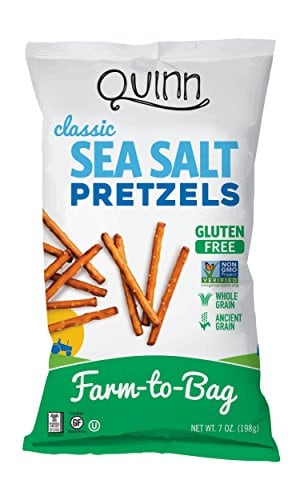One of the ‘five ancient grains’ listed in Chinese mythology, sorghum is today a major source of agricultural fodder, alcoholic beverages and commercial biofuels.
Although little known to consumers in Europe and the United States, sorghum is also a staple ingredient in many diets throughout Asia and Africa.
However, given the current boom in popularity for ‘clean ingredients’ like flax and chia seeds, quinoa and millet grains, many chefs and food manufacturers are now turning toward the side-lined sorghum grain for its health qualities and diversity as an ingredient.
According to a Mintel blog, a quarter of global sorghum based product launches come from the Indian food market, where the grain is a standard constituent of the cuisine.
Artisan, handmade and clean
However, its use in the European food market is still rare – something Mintel analyst and author of the report, Marcia Mogelonsky expects to change.
“Like quinoa, sorghum’s versatility (as an ingredient in snacks or as a snack food on its own in popped form), will give it room to grow in the category. What’s more, sorghum’s ‘heritage’ will help it gain popularity as more consumers seek artisan, handmade, 'clean' ingredients.”
Speaking to FoodNavigator, Mogelonsky said the market is currently difficult to evaluate and predict, but that given the more general food trends to which sorghum appeals (alternative proteins, gluten-free etc) it is likely to become increasingly popular.
“We don't have any sales data for sorghum or sorghum products, but looking at new launches, specifically at sorghum as an ingredient in different types of food and beverages, there has been a 21% increase in launches of food/beverages with sorghum in them between 2015 and 2016.”
Sorghum is also still relatively cheap in comparison to many other similar food sources; at roughly $140USD (€130), its costs easily trump those of other options like quinoa, which sells for as high as $7,000USD (€6,520) per metric tonne.
Sorghum's superfood nutrient profile
Much like other ancient grains, sorghum is a good protein source, containing 11.3% protein, 75% carbohydrate and 6.3% fibre. Last year a Lux Research report found that global demand for alternative proteins will double in just eight years.
By 2054, the report found, total protein demand will reach 943.5 million metric tonnes.
Sorghum also has high iron content, high levels of vitamins and anti-oxidants, is gluten-free and in 2013 was certified as coeliac-safe by the American Chemical Society’s Journal of Agriculture and Food Chemistry. The US has since increased production to satisfy the increasing demand for wheat free foods.
A Transparency Market Research report in 2015 estimated the gluten-free market worldwide would reach $4.89 billion (€4.45 billion)
Companies such as Quinn’s, based in the US, have experimented with the launch of sorghum based pretzels and other savoury snacks.

Although the US is the world’s number one producer of commercial sorghum, production of edible strains of the plant is still lacking.
In China, where sorghum is also a staple part of the diet, the grain is used in savoury snacks, meat products, dressings, ready-meals and condiments.
